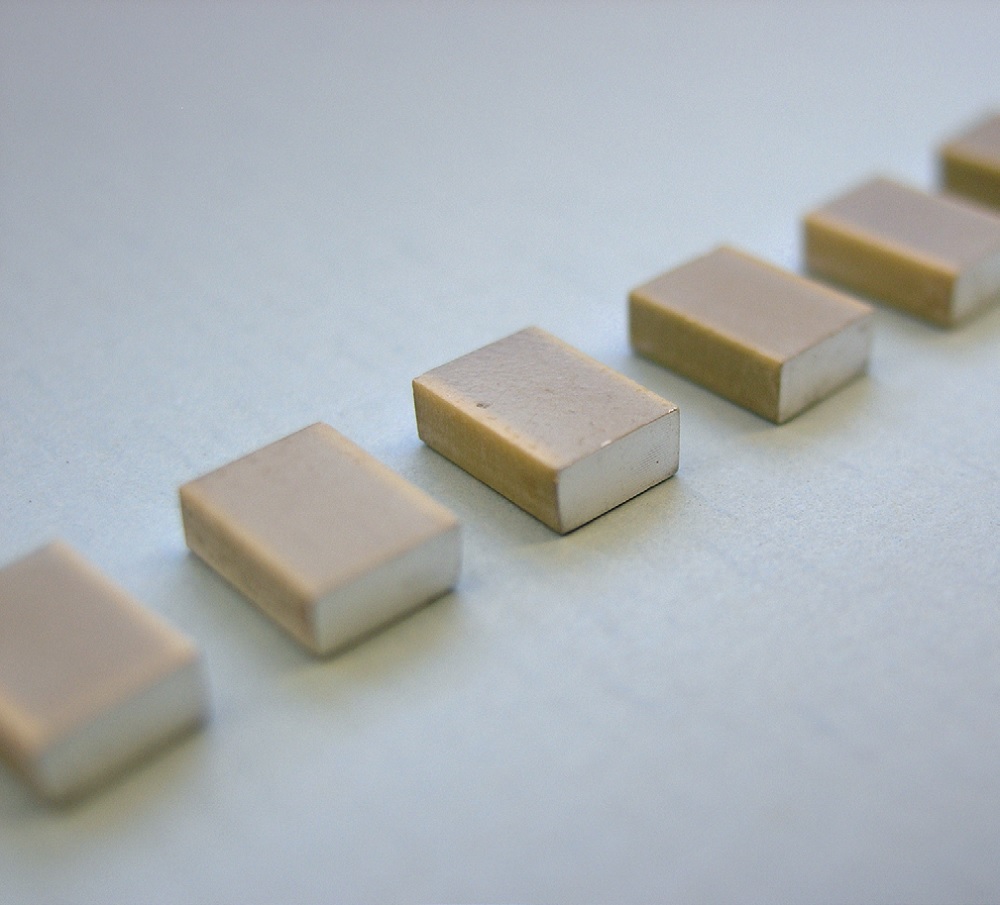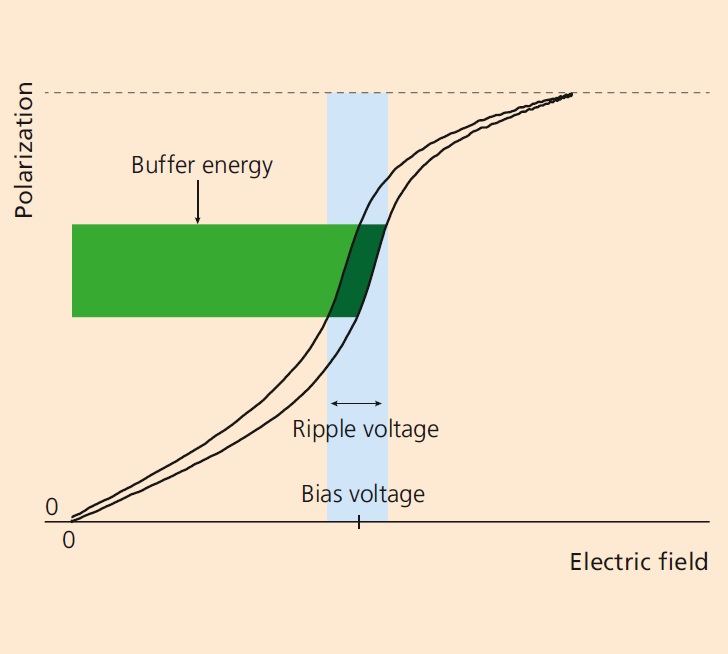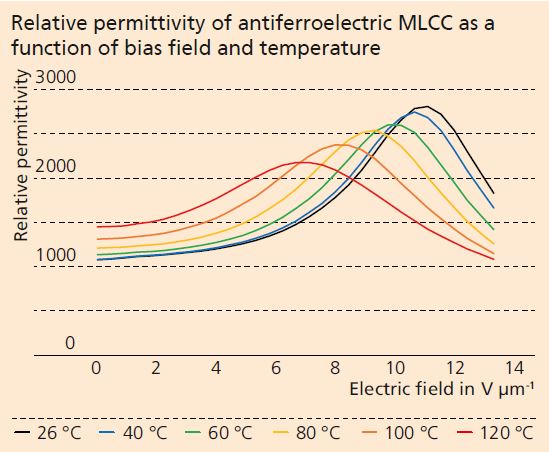


For high-density power electronic systems with miniaturized system size and high efficiency, capacitors with increased capacitance density under high electric fields and elevated temperatures are needed. Only capacitors meeting these requirements will be able to be used for the design and manufacture of future power switches with wide-band-gap semiconductors. An expanding market for engine control systems and DC/DC converters for electromobility and regenerative energies is the main factor driving the requirements for these components.
Conventional polymer-based film capacitors and multilayer ceramic capacitors (MLCCs) are restricted in terms of thermal stability and capacitance density or show a strong decrease in capacitance when higher voltages are applied. Antiferroelectric materials offer high permittivities, which even increase with increasing bias voltage. They allow for the development of capacitors with high capacitance density at high DC bias, high current handling capabilities, and stable operation at elevated temperatures.
Multilayer ceramic capacitors based on the material system lead lanthanum zirconate titanate (PLZT) with higher permittivities at higher electric field strengths than exhibited by conventional capacitors are being developed at Fraunhofer IKTS. This is accomplished through synthesis of PLZT materials with suitably adjusted phase compositions and targeted doping to yield higher energy densities. The powder can be produced on a kg scale, allowing for batch production of MLCCs.
Using this technology, multilayer ceramic capacitors with up to 50 ceramic and AgPd inner electrode layers have been manufactured. After sintering, the ceramic layer thickness is 45 μm and the AgPd inner electrode thickness is 2 μm. The MLCCs show a very high relative permittivity of εr,max = 2800 at a switching field of Ebias = 11.1 kV/mm and a ripple voltage of Up-p = 20 V at room temperature. Excellent values are also obtained at higher temperatures. The material system offers room for improvement in the capacitance and switching field values, which in turn will allow for development of MLCCs with significantly higher energy densities in the future.